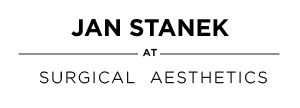‘Selfie Surgery’: A Modern Phenomenon
/Wisconsin’s WEAU news site recently reported on the current trend of ‘selfie surgery’ in younger age groups prompted by the growth of social media. The hypothesis being that either posting photos by oneself or being tagged by others has made us ever more critical of how we look. Of course, the former is more easily remedied with flattering filters and/or Photoshop! Development of the front-facing camera and its deployment in the majority of smartphones since 2010 has even led the ‘Leader of the Free World’ to court controversy when he posed for a selfie at Nelson Mandela’s funeral.
Many of us born in the pre-mobile age will recall another such stimulator of self-critique: the mirror! Also termed ‘looking glass’ for obvious reasons, polished obsidian stone reflectors have been discovered in Turkey and dated to 6000 BC. Students of Greek mythology will no doubt recall Ovid’s fable of the hunter Narcissus from @ 8 AD, where the latter espied his own reflection in the still water of a dark pool and became so entranced by it that he was unable to leave and consequently perished. There is some evidence that a correlation exists between time spent on Facebook and poor body image (http://www.bbc.co.uk/news/health-26952394). This paper, presented in Seattle in May, was actually looking at Facebook use and eating habits, but found a link between time spent on social networks and negative comparisons of body image. Mind you, the internet and such powerful smartphone technology are still relatively new in human evolutionary terms with the current generation of teens the first real group to be born into a world where everyone and everything are immediately connected so we may not yet have had sufficient time for any degree of adjustment. As imagery has always been an integral part of the inherent consciousness of all but the blind, it would be interesting to see if similar increases occurred when either television or glossy magazines became commonplace.
Whilst we have all seen patients who have been influenced by social media ‘trolling’, many children have been made well aware of unduly prominent ears, noses or other differences by their socially unhindered peers. As long as self-awareness exists alongside the natural human drive of self-improvement it is likely that aesthetic surgery will continue to exist. In some respects it may be considered no more than one end of the spectrum of human grooming and presentation. As it becomes safer, more predictable and cheaper, the figures will probably continue to rise. As with other lifestyle choices, cosmetic surgery is not for all and everyone must seriously consider their motives for going under the knife. Expectations are also on the increase and some feel they are already hovering close to unattainable so surgeons such as Jan Stanek have a strong moral duty and corresponding influence. Although there are undoubtedly those who have allowed finances to achieve primacy, one must not forget that there is an innate responsibility within the medical profession: primum non nocere is our creed and translates as ‘first do no harm’. This is closely followed by the principle of beneficence, ie., doing some good.
Originally posted on The Huffington Post








